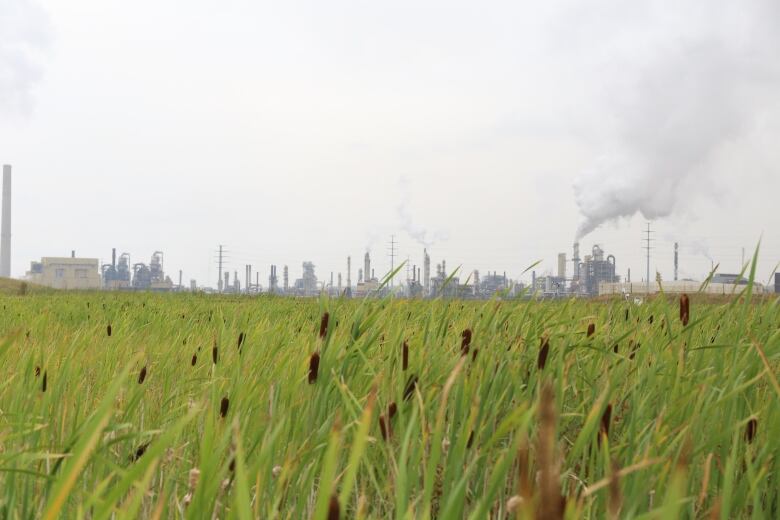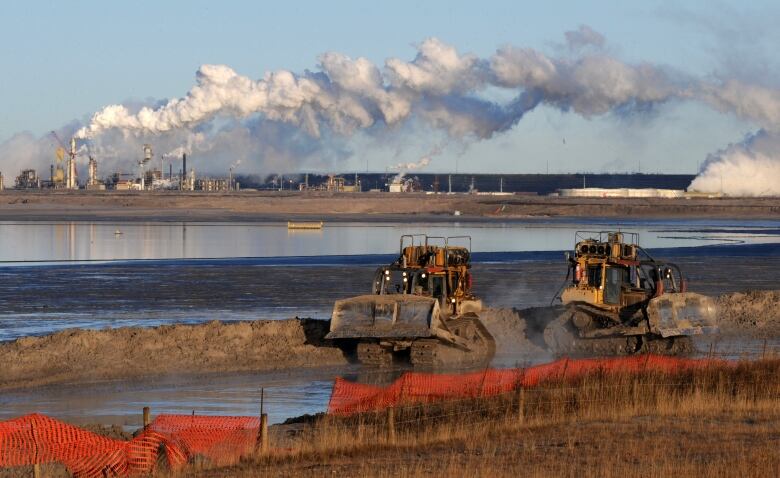Two First Nations oppose extension of Syncrude oilsands mine
'The MLX Project is going to tip the balance, pushing the area beyond the point where it can be restored'

Two First Nations are voicing their opposition to the extension of a legacy oilsands mine north of Fort McMurraybefore the project goes to an energy review next month.
The Athabasca Chipewyan and the Mikisew Cree First Nations have both filed statements of concern forSyncrude's Mildred Lake Extension or MLX. The project goes to a provincial review in January.
Both Nations say they're worried about the amount of water the project will use, hydrocarbon and heavy metal contamination, and the destruction of fish, caribou and moose habitat.
"That area can't sustain another oilsands mine, especially not the way Syncrude treats the land," Allan Adam, chief of the Athabasca Chipewyan First Nation, said in a news release. "The MLX Project is going to tip the balance, pushing the area beyond the point where it can be restored."

MLX is a proposedextension that would span 69 square kilometres.
Syncrudenoted the mine would be near its processing and upgrading facility, located about 40kilometres north of Fort McMurray.
If granted regulatory approval the mine would be operational by 2023 or2024 and would allow Syncrude to maintain an existing 2,000 jobs and create about 1,160 construction jobs.
It's estimated the mine would produce 738 million barrels of bitumen over14 years.
Syncrude's older Mildred Lake operation has been open since 1978.
MLX an extension, not an expansion
Syncrude spokesperson Will Gibson says Syncrude has been speaking with stakeholders since 2012 and has reached agreements with Indigenous groups surrounding the project.
Public regulatory documents indicate the company has resolved issues with at least four Indigenous communities:the Chipewyan Prairie Dene First Nation, Fort McMurray #468 First Nation and the McMurray and McKay Mtis groups.
Gibson also said the company has minimized MLX's environmental impact and the companypurchased a timber quotathat will preserve a large swath of boreal forest in northwestern Alberta.
This move earned Syncrude a land disturbance offset that's larger than MLX's footprint.
Gibson said MLX is not an expansion butan extensionof an existing mine becausethere will be no new tailing ponds and Syncrude's annual carbon emissions and water withdrawals would not increase.
"People who call this an expansion are inaccurate," Gibson said. "In our view, this project marries the needs for the economic benefits while minimizing environmental impacts."
'Regulatory gamesmanship'
But the Mikisew Cree First Nation is accusing Syncrude of playing "regulatory gamesmanship," because on a long-term basis the mine will use more water, even if the per barrel water usage is unchanged from the current mine.
"The intensity per barrel is likely going to stay the same," Dan Stuckless, the Mikisew's manager of industry relations said. "They're going to use more water in the end because they're extending the life of the mine.
"And then, you're adding more reclamation on top of that."
The Athabasca Chipewyan and the Mikisew Cree First Nations are located about 150 kilometres away from the proposed mine.
- MOREFORTMcMURRAYNEWS:Alberta bus monitor removed for writing letter 'expressing his feelings' to young girl
- MORE FORTMcMURRAYNEWS:Volunteers serve up renovation plan for Fort McMurray bar closed since wildfire
- MORE FORTMcMURRAYNEWS:'Like a bomb went off': Truck smashes into First Nation gas station
And while these Nations have been vocal about their concerns, two Indigenous groups in the community closest to the mine have been relatively quiet.
McKay Mtis president Ron Quintal told CBC Tuesday his community is satisfied Syncrude has addressed their concerns surrounding the project.

"To address our concerns, Syncrude stepped up," Quintal said. "From our perspective, we came to an agreement."
Spokesperson Jauvonne Kittosaidthe Fort McKay First Nation has no comment at this time.
MLX goes to a public hearing on Jan. 22 in Fort McMurray.
Connect with David Thurton, CBC'sFort McMurraycorrespondent, onFacebook,Twitter,LinkedInor email him atdavid.thurton@cbc.ca













_(720p).jpg)


 OFFICIAL HD MUSIC VIDEO.jpg)
.jpg)



























































































